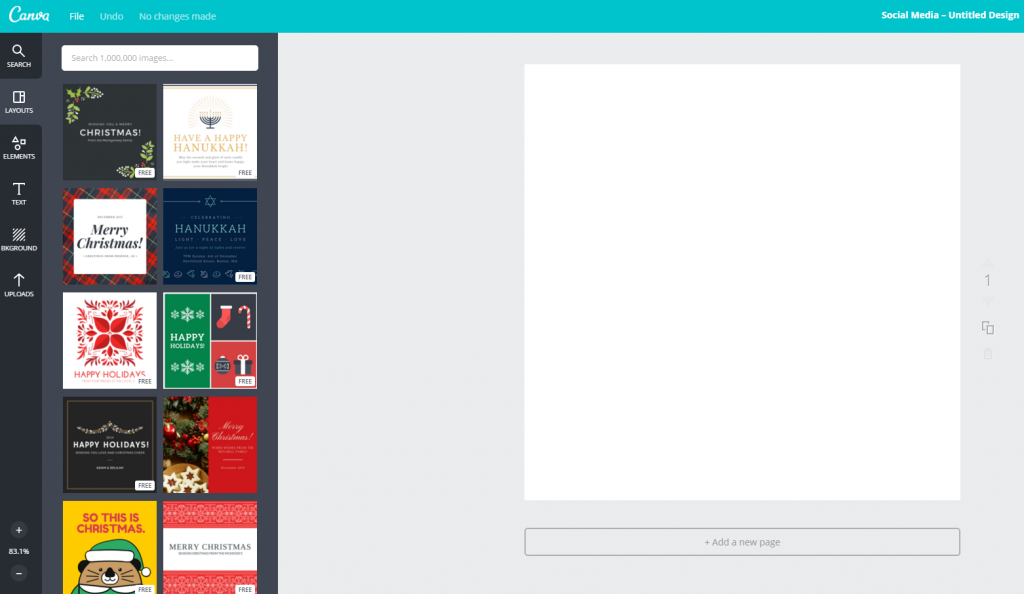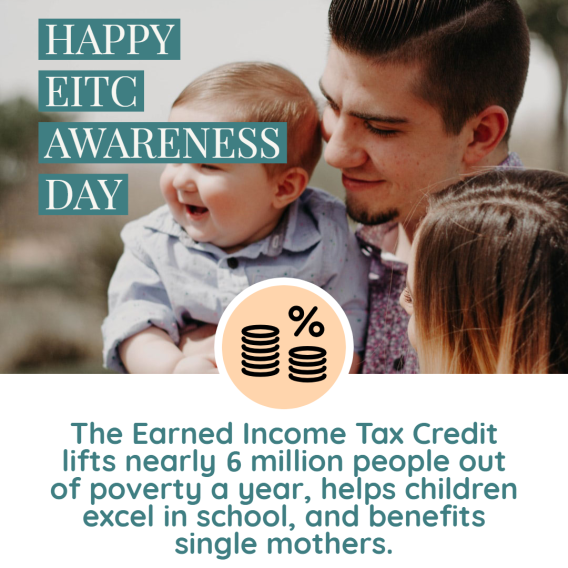
Social media is a great platform to reach potential tax credit and VITA clients, as well as volunteers and outreach campaign supporters. Here are 10 tips on how to build a following, and keep followers interested and engaged on Facebook, Twitter, and other social media platforms.
1. Decide what your goals are
Before creating your social media accounts, decide why you’re branching out and how social media will be integrated with your overall outreach and communications strategy.
Possible goals:
- Increase number of VITA clients
- Recruit volunteers
- Fundraise for your organization
- Reach more EITC recipients
- Increase supporters of your organization
- Get media coverage of your organization’s accomplishments

2. Find out who your audience is
This is another question you’ll have to ask yourself before joining social media. Your audience will likely reflect the goal you decided on. For example, if your goal is to recruit volunteers, the audience might be local law school students. Think of a persona that realistically fits your audience, and then research demographics to see how that audience tends to use social media.
For many partners, your target audience will be Earned Income Tax Credit and Child Tax Credit recipients. To learn more about who’s receiving or could benefit from tax credits in your community, you can use databases such as the Center on Budget & Policy Priorities’ Program Participation Data Dashboard or Urban Institute’s Financial Health and Wellness Dashboard. Older, yet useful data is available through the Tax Policy Center’s EITC Interactive Database (instructions here).
Once you’re online, you can use analytics to learn more about how your audience is using social media. Facebook Insights and Twitter’s Audience Insights are fantastic free tools that tell you important demographic information on your audience.
3. Determine which social media sites to join
Before you join every social media site, think about your staff’s capacity. Otherwise, you may spread yourself too thin. Remember that social media takes time. Expect Facebook to take about 3 hours a week, Twitter to take 5 hours, and blogging to take 5-10 hours. Decide how much of a budget you have and use it wisely. Make sure you’re devoting enough time to each account.
![]()
4. Post consistently
Aim to post on Facebook 3-5 times a week (or up to 2 posts a day) and on Twitter 2-4 times a day. Generally, engagement decreases if you post too often. You can schedule posts on Facebook ahead of time or use a tool like Buffer or HootSuite for Twitter.
5. Create and curate great content
Ideally, 80 percent of posts should be shared from other sources and 20 percent of your posts should be original content. Find short articles on tax credits, saving money, and building assets. Look out for trending topics and see how you can adapt them to your own work. Many of the blog posts on this site are directed at people who can benefit from tax credits—you are welcome to repost to share them with your clients and your network!
Not sure what your 20 percent of original content should include? Here are some ideas:
- Weekly or monthly stats on how many VITA clients your organization has served
- “Top Ten” style lists. For example, you could share our “Top Six Reasons to File Your Taxes for Free” blog post
- Stories from people who have benefitted from tax credits
- Volunteer spotlights and thank yous
- Calls to action, be it for volunteers, donations, or space

6. Make it visual
Good images grab attention and trigger emotional responses that text can’t. Take the time to create beautiful graphics using a simple and free tool like Canva. Images can feature inspirational quotes related to your work, tax credit statistics (with a link to your website), or testimonials.
If you don’t have time to create your own images, that’s okay! Our website, blog, and Facebook page all feature images that you can share. Also remember to share pictures from your organization’s events.

7. Have a conversation
Social media isn’t just a one-way broadcast of your news, articles, and events. Make sure that you’re starting two-way conversations and posting content that your followers care about. Start conversations by including questions in your posts. Engage the audience by responding to comments and questions left on your posts. Not only will your followers appreciate being heard, but they will also engage more with your content.
8. Use calendars
Create a calendar to help you plan posts ahead of time and stay on top of important dates.

9. Track your results
Remember those goals you decided on in step 1? Well, it’s important to track your progress.
If your goal was to direct more people to your website, you can use Google Analytics to check up on referrals from social media. You can also use data from the site itself: Twitter Analytics, Facebook Insights, and YouTube Analytics all store information about how your page is doing. Buffer and Social Sprout both have guides to tracking these metrics.
10. Take chances and have fun!
Social media is a less formal platform than traditional media and you should take advantage of that. Use conversational language and share a glimpse into the life of staff members from time to time. Don’t be afraid to be yourself! You want your followers to remember that there’s a person behind the account. Try out different kinds of posts, and eventually you’ll find what resonates with your audience.
SOCIAL MEDIA TRAINING SERIES
Need a little more help? Watch our webinar trainings.
Part 1: Using Social Media in Tax Credit Outreach
Wednesday, January 20, 2016
Part 2: Outreach Graphics Made Easy: How to Create Visuals on a Budget
Thursday, January 21, 2016
ADDITIONAL RESOURCES
- Which Social Media Platforms Should Your Nonprofit Use? – LinkedIn for Nonprofits
- How Nonprofits can use Social Media to Increase Donations and Boost Visibility – Forbes






